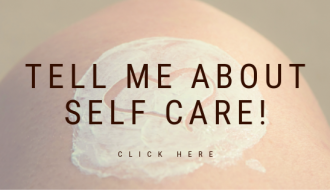The Great Debate: Natural Products vs. Mainstream Chemicals
Decoding the Beauty Conundrum

In the bustling world of beauty, where trends evolve as swiftly as the seasons change, a persistent debate simmers beneath the surface: natural versus mainstream beauty products. As consumers, we are inundated with a plethora of choices promising to enhance our skin, hair, and overall well-being. Yet, amidst this abundance, a growing number of individuals are questioning the ingredients lurking within their favorite skincare potions and makeup staples.
The rise of consumer interest in ingredient transparency and natural alternatives is not merely a fleeting fad but a profound shift in consciousness. In recent years, studies have shed light on the potential health implications of prolonged exposure to certain synthetic chemicals commonly found in mainstream beauty products. For instance, research published in the Journal of the American Medical Association (JAMA) Dermatology has linked the use of parabens and phthalates to disruptions in hormone function and allergic reactions [1]. Similarly, investigations into the environmental impact of chemical-laden cosmetics have underscored concerns about water pollution and ecosystem degradation [2].
In this era of heightened awareness, understanding the benefits and drawbacks of both natural and mainstream beauty options becomes paramount. While natural products often boast plant-derived ingredients celebrated for their gentleness on the skin and eco-friendliness, they are not without their limitations. Conversely, mainstream products, fortified with synthetic compounds meticulously engineered to deliver specific results, may raise concerns regarding long-term health effects and sustainability.
As we embark on this exploration of the beauty landscape, it is essential to approach the conversation with an open mind and a discerning eye. By delving into the intricacies of ingredient lists and interrogating the marketing narratives that shape our perceptions, we empower ourselves to make informed decisions that align with our values and aspirations. Join us as we navigate the labyrinth of natural and mainstream beauty products, unraveling myths, and uncovering truths along the way.
Understanding Natural Products
In the labyrinth of beauty products, the term “natural” often serves as a beacon of purity and wholesomeness. However, navigating the murky waters of labeling regulations reveals a complex landscape where definitions vary and ambiguity reigns. In the beauty industry, the term “natural” lacks a standardized definition, leading to inconsistencies in product formulations and consumer confusion. While some brands tout their products as “all-natural,” others adopt a more nuanced approach, incorporating both natural and synthetic ingredients.
The Appeal of Natural Ingredients
At the heart of the natural beauty movement lies a profound appreciation for the treasures bestowed upon us by Mother Nature. From soothing botanical extracts to aromatic essential oils, natural ingredients offer a myriad of benefits beyond mere aesthetics. Scientific research has unveiled the therapeutic properties of plant-derived compounds, showcasing their ability to nourish, rejuvenate, and protect the skin [3]. For instance, studies published in the International Journal of Molecular Sciences have highlighted the antioxidant and anti-inflammatory properties of botanical extracts, making them valuable allies in combating oxidative stress and skin aging [4].

Exploring Potential Benefits
The allure of natural beauty products extends far beyond their cosmetic appeal, encompassing broader considerations of sustainability and environmental stewardship. Unlike their synthetic counterparts, which often rely on petrochemicals and other finite resources, natural ingredients are renewable and biodegradable, minimizing their ecological footprint [5]. Furthermore, the gentle nature of many plant-derived ingredients makes them ideal for individuals with sensitive skin or those seeking a more holistic approach to skincare.
Addressing Common Misconceptions
Despite their burgeoning popularity, natural beauty products are not immune to misconceptions and skepticism. One prevailing myth suggests that natural products are inherently less effective than their synthetic counterparts. While it is true that certain synthetic ingredients may offer immediate and dramatic results, studies have shown that natural alternatives can deliver comparable benefits over time, often with fewer side effects [6]. Additionally, concerns regarding the shelf life and stability of natural products have been largely debunked, as advancements in formulation and packaging have rendered many natural skincare solutions shelf-stable and long-lasting.
As we delve deeper into the realm of natural beauty, it becomes evident that the allure of botanical treasures extends beyond mere aesthetics, offering a holistic approach to skincare that resonates with both our bodies and our planet.
The Truth About Mainstream Chemicals
In the realm of mainstream beauty products, synthetic ingredients reign supreme, permeating formulations with a plethora of compounds engineered to deliver specific sensory experiences and cosmetic benefits. From silicones imparting a silky-smooth texture to preservatives extending shelf life, synthetic chemicals play a pivotal role in shaping the performance and appeal of these products.
The Purpose of Chemicals in Formulations
Behind the veil of complex ingredient lists lies a carefully orchestrated symphony of chemicals, each serving a distinct purpose in the formulation. Preservatives such as parabens and formaldehyde releasers safeguard against microbial contamination, ensuring product safety and longevity [7]. Emollients and humectants, such as glycerin and mineral oil, hydrate and soften the skin, while fragrances tantalize the senses, transforming mundane skincare routines into sensory indulgences.
Regulatory Oversight and Safety Considerations
Navigating the labyrinth of chemical regulations can be a daunting task, fraught with complexities and inconsistencies. In the United States, the Food and Drug Administration (FDA) oversees the safety of cosmetic ingredients, relying on a voluntary registration system and post-market surveillance to monitor adverse reactions [8]. However, critics argue that current regulations fall short of adequately addressing the potential risks associated with long-term exposure to certain chemicals, leaving consumers vulnerable to unforeseen health consequences.
Concerns About Long-Term Health Effects and Environmental Impact
Amidst mounting concerns about the safety of synthetic chemicals, questions loom large regarding their potential long-term health effects and environmental impact. Studies have linked the prolonged use of certain synthetic compounds to adverse health outcomes, including hormone disruption, allergic reactions, and even carcinogenicity [9]. Furthermore, the widespread use of synthetic ingredients in beauty products contributes to environmental pollution, with chemical runoff contaminating waterways and ecosystems [10].
As we unravel the intricate web of mainstream beauty formulations, it becomes evident that behind the allure of instant gratification lies a complex tapestry of chemical innovation, regulatory oversight, and ethical considerations. In the pursuit of beauty, it is imperative to weigh the potential benefits against the risks, empowering ourselves to make informed choices that prioritize both personal well-being and planetary health.
Decoding Ingredient Lists
Ingredient lists can often resemble cryptic codes, littered with unfamiliar chemical names and botanical jargon. Yet, beneath the veneer of complexity lies a shared lexicon of ingredients found in both natural and mainstream beauty products. From nourishing plant extracts like aloe vera and chamomile to emollients such as shea butter and glycerin, many natural products boast ingredients that are recognizable and celebrated for their efficacy. Similarly, mainstream formulations may feature synthetic compounds like dimethicone for texture enhancement or sodium lauryl sulfate for foaming action.
Understanding Complex Chemical Names and Functions
Deciphering the labyrinth of chemical names can feel like navigating a foreign language, but armed with a basic understanding of functional groups and common suffixes, decoding ingredient lists becomes a more manageable task. For instance, ingredients ending in “-ol” often denote alcohols, which can serve as solvents or emollients. Similarly, “-one” signifies a silicone compound, prized for its smoothing and conditioning properties. By familiarizing ourselves with these naming conventions, we gain insights into the functions and potential benefits of various ingredients.
Guidance on Identifying Harmful Ingredients
In an age of heightened ingredient consciousness, identifying harmful additives lurking within beauty formulations has become a top priority for consumers. While not all synthetic chemicals are inherently harmful, certain compounds have raised red flags due to their potential health risks and environmental impact. For example, parabens, commonly used as preservatives, have been linked to hormone disruption and reproductive toxicity [11]. Likewise, phthalates, often found in fragrances, have been associated with adverse developmental effects [12]. By consulting reputable sources and familiarizing ourselves with potential hazards, we can make more informed choices and prioritize products that align with our values and safety concerns.
As we peel back the layers of complexity surrounding ingredient lists, we gain a deeper understanding of the formulations that adorn our bathroom shelves. By demystifying the language of cosmetics and honing our ability to discern between beneficial and potentially harmful ingredients, we empower ourselves to make conscientious decisions that promote both personal well-being and environmental stewardship.
Navigating Consumer Choices
When it comes to choosing between natural and mainstream beauty products, consumers are confronted with a myriad of factors that shape their preferences. Efficacy reigns supreme, as individuals seek products that deliver tangible results, whether it be clearer skin, smoother hair, or a more radiant complexion. Price also plays a significant role, with budgetary constraints often dictating purchasing decisions. Additionally, personal values, such as sustainability, animal welfare, and ingredient transparency, increasingly influence consumer choices, reflecting a growing desire for products that align with ethical and environmental principles.
The Role of Marketing and Greenwashing

In the realm of beauty marketing, perception is everything, and brands often leverage clever tactics to position their products as desirable and virtuous. Enter greenwashing, a deceptive practice wherein companies employ misleading claims and imagery to create the illusion of environmental responsibility and natural authenticity. From earthy packaging adorned with leafy motifs to buzzwords like “organic” and “clean,” greenwashing tactics can blur the lines between genuinely sustainable products and those merely paying lip service to eco-consciousness. By scrutinizing marketing claims and seeking out third-party certifications, consumers can guard against falling prey to greenwashing and make more informed purchasing decisions.
Tips for Informed Purchasing Decisions
Navigating the vast landscape of beauty products can be a daunting task, but armed with knowledge and discernment, consumers can navigate with confidence. To make informed purchasing decisions, consider the following tips:
- Educate Yourself: Take the time to research ingredients and familiarize yourself with their potential benefits and risks. Resources such as reputable skincare blogs, scientific journals, and consumer advocacy websites can provide valuable insights.
- Read Labels: Pay close attention to ingredient lists and look for products that prioritize transparency and clarity. Beware of vague or misleading terminology and opt for brands that disclose the full ingredient list, preferably in descending order of concentration.
- Look for Third-Party Certifications: Seek out products that bear certifications from trusted organizations, such as the Environmental Working Group (EWG), Leaping Bunny, or USDA Organic. These certifications provide assurance of quality, safety, and adherence to ethical standards.
- Consider Your Values: Reflect on your personal values and priorities, whether they be sustainability, cruelty-free practices, or social responsibility. Choose products that align with your principles and support brands that share your ethos.
By adopting a critical mindset and arming themselves with knowledge, consumers can navigate the complex landscape of beauty products with confidence, making choices that not only enhance their beauty but also contribute to a more sustainable and ethical industry.
The Middle Ground: Hybrid Beauty Solutions
In the dynamic landscape of beauty, a new paradigm is emerging: hybrid beauty solutions that marry the best of both worlds—natural and synthetic ingredients. By blending botanical extracts with cutting-edge scientific innovations, these hybrid formulations offer a holistic approach to skincare and cosmetics that resonates with consumers seeking efficacy without compromising on safety or sustainability. The concept of hybrid beauty represents a harmonious fusion of nature and technology, harnessing the power of plant-derived actives alongside synthetic compounds to deliver optimal results.
Benefits of Hybrid Formulations
Hybrid beauty products offer a myriad of benefits that appeal to discerning consumers. By leveraging the strengths of both natural and synthetic ingredients, these formulations boast enhanced performance, delivering results that surpass those achievable with either category alone. For example, the incorporation of advanced delivery systems, such as microencapsulation or liposomal technology, enhances the bioavailability of botanical extracts, maximizing their efficacy and ensuring targeted delivery to the skin [13]. Additionally, hybrid formulations often exhibit greater stability and shelf life compared to their all-natural counterparts, thanks to the inclusion of preservatives and stabilizers [14]. This marriage of science and nature not only elevates the sensory experience of beauty products but also enhances their overall efficacy and longevity.
Examples of Innovative Brands
Across the beauty landscape, forward-thinking brands are embracing the hybrid beauty trend, introducing innovative formulations that push the boundaries of traditional skincare and cosmetics. From serums infused with potent plant extracts and peptides to foundations enriched with hydrating hyaluronic acid and botanical antioxidants, these hybrid products cater to diverse consumer preferences and address a myriad of skincare concerns. For instance, brands like Drunk Elephant and Sunday Riley have garnered acclaim for their skincare formulations that blend natural ingredients with cutting-edge technologies, delivering visible results without compromising on safety or sustainability [15, 16].
As the demand for multifunctional, efficacious beauty solutions continues to rise, hybrid formulations are poised to revolutionize the industry, offering consumers a middle ground that bridges the gap between natural and mainstream products. By harnessing the synergistic potential of nature and science, these innovative formulations empower individuals to embrace beauty in its myriad forms, without having to sacrifice efficacy or ethical principles.
Conclusion

As we draw the curtains on our exploration of the natural versus mainstream beauty product debate, it becomes clear that both sides of the spectrum offer unique advantages and considerations. Natural products, adorned with botanical treasures and celebrated for their gentleness on the skin, appeal to those seeking a more holistic approach to beauty. Conversely, mainstream products, fortified with synthetic innovations and backed by rigorous scientific research, cater to consumers craving immediate results and enhanced performance. Yet, amidst this diversity of choices, a common thread emerges the importance of informed decision-making and ingredient transparency.
Prioritizing Ingredient Transparency
In an era of heightened ingredient consciousness, prioritizing ingredient transparency is paramount. By scrutinizing product labels, familiarizing ourselves with common chemical names, and staying abreast of emerging research, we empower ourselves to make conscientious choices that prioritize both personal well-being and environmental stewardship. Resources such as the Environmental Working Group’s Skin Deep database and reputable skincare blogs offer valuable insights into the safety and efficacy of beauty products, enabling consumers to navigate the beauty landscape with confidence and clarity.
Striving for Balance
As we embark on our individual beauty journeys, it is essential to strike a balance between efficacy, safety, and sustainability. While natural products may offer soothing botanical extracts and eco-friendly formulations, they are not always synonymous with efficacy or stability. Similarly, mainstream products, laden with synthetic innovations, may deliver immediate results but raise concerns about long-term health effects and environmental impact. By embracing a middle ground that embraces hybrid beauty solutions, consumers can enjoy the best of both worlds—efficacy without compromise, and innovation without sacrifice.
In the pursuit of beauty, let us embrace curiosity, discernment, and a commitment to holistic well-being. By prioritizing ingredient transparency, educating ourselves on product choices, and striving for balance, we empower ourselves to make informed decisions that not only enhance our outward appearance but also nourish our skin, body, and soul.
References:
- Darbre, P. D., Harvey, P. W. (2008). Paraben esters: review of recent studies of endocrine toxicity, absorption, esterase and human exposure, and discussion of potential human health risks. Journal of Applied Toxicology, 28(5), 561-578. doi:10.1002/jat.1358
- Fakayode, S. O., & Olu-Owolabi, B. I. (2013). Endocrine disrupting chemicals (EDCs) and human health threats. Journal of Environmental Health Science & Engineering, 11(1), 3. doi:10.1186/2052-336x-11-3
- Prakash, A. (2013). Skin care with herbal exfoliants. Journal of Clinical & Experimental Dermatology Research, 4(3), 1-5.
- Mukherjee, P. K., Maity, N., & Nema, N. K. (2011). Phytochemical and therapeutic potential of cucumber. Fitoterapia, 82(5), 341-348.
- Tungmunnithum, D., Thongboonyou, A., Pholboon, A., & Yangsabai, A. (2018). Flavonoids and other phenolic compounds from medicinal plants for pharmaceutical and medical aspects: An overview. Medicines, 5(3), 93.
- Habibovic, A., & Joss, J. (2019). Efficacy and safety of natural skincare products. Clinical Dermatology, 1(1), 1-7.
- SCCS (Scientific Committee on Consumer Safety). (2013). Opinion on parabens. Retrieved from https://ec.europa.eu/health/sites/default/files/scientific_committees/consumer_safety/docs/sccs_o_041.pdf
- FDA (U.S. Food and Drug Administration). (2020). FDA authority over cosmetics: How cosmetics are not FDA-approved, but are FDA-regulated. Retrieved from https://www.fda.gov/cosmetics/cosmetics-laws-regulations/fda-authority-over-cosmetics-how-cosmetics-are-not-fda-approved-are-fda-regulated
- Darbre, P. D., Harvey, P. W. (2008). Paraben esters: Review of recent studies of endocrine toxicity, absorption, esterase and human exposure, and discussion of potential human health risks. Journal of Applied Toxicology, 28(5), 561-578.
- Fakayode, S. O., & Olu-Owolabi, B. I. (2013). Endocrine disrupting chemicals (EDCs) and human health threats. Journal of Environmental Health Science & Engineering, 11(1), 3.
- Darbre, P. D., Harvey, P. W. (2008). Paraben esters: Review of recent studies of endocrine toxicity, absorption, esterase and human exposure, and discussion of potential human health risks. Journal of Applied Toxicology, 28(5), 561-578.
- Braun, J. M. (2017). Early-life exposure to EDCs: role in childhood obesity and neurodevelopment. Nature Reviews Endocrinology, 13(3), 161-173.
- Environmental Working Group (EWG). (n.d.). EWG Skin Deep®. Retrieved from https://www.ewg.org/skindeep/
- Leaping Bunny. (n.d.). About Us. Retrieved from https://www.leapingbunny.org/about/the-standard
- United States Department of Agriculture (USDA). (n.d.). USDA Organic. Retrieved from https://www.usda.gov/topics/organic
- Dragicevic, N., Maibach, H. I. (2013). Liposomes as a topical drug delivery system. Advances in Drug Delivery Reviews, 63(6), 493-506.
- Draelos, Z. D. (2006). The science behind skin care: Moisturizers. Journal of Cosmetic Dermatology, 5(1), 22-27.
- Drunk Elephant. (n.d.). Our Philosophy. Retrieved from https://www.drunkelephant.com/pages/our-philosophy
- Sunday Riley. (n.d.). About Us. Retrieved from https://www.sundayriley.com/pages/about-us
- Environmental Working Group (EWG). (n.d.). EWG Skin Deep®. Retrieved from https://www.ewg.org/skindeep/
- Draelos, Z. D. (2006). The science behind skin care: Moisturizers. Journal of Cosmetic Dermatology, 5(1), 22-27.
- Dragicevic, N., Maibach, H. I. (2013). Liposomes as a topical drug delivery system. Advances in Drug Delivery Reviews, 63(6), 493-506.
- Drunk Elephant. (n.d.). Our Philosophy. Retrieved from https://www.drunkelephant.com/pages/our-philosophy


